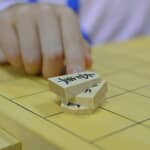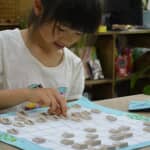Shogi 18 April 2018
Shogi Rules – How to Play Shogi – : Step 3-6 How to Use Hand Pieces
A professional Shogi player invites you to the world of Shogi along with traditional Japanese culture. In this series, there are three steps and each step has around 10 lessons. Even though you don’t know about Shogi, through these three steps you will get knowledge to enjoy it.
*Please note that the Kanji numbers in pictures are spelled in English in the text.
The following Shogi boards have a face with files (vertical rows) numbered 1 through 9 from right to left, and ranks (horizontal rows) designated with Kanji characters, “一” (One) to “九” (Nine), from top to bottom. On the other hand, in the text, each Kanji character is replaced with an alphabet, from “a” to “i” : “一” with “a”, “二” with “b”, … and “九” with ”i”.
Step 3-6: How to Use Hand Pieces
What you should keep in mind after getting a piece is to reuse it as a hand piece. In line with the following three points, you are going to learn how to use hand pieces effectively.
1. Fork
Fork is a technique to attack two pieces at the same time. Even if an opponent protect one of the two pieces against your attack, you still have a chance to capture another one. This is a very useful technique. In the event that, incidentally, one of two pieces is Fu (Pawn), the attack isn’t called Fork.
Look at the below picture #1. Dropping Kei (Knight) on the square of 2c, N*2c, allows you to attack Kaku (Bishop) and Kin (Gold) at the same time.
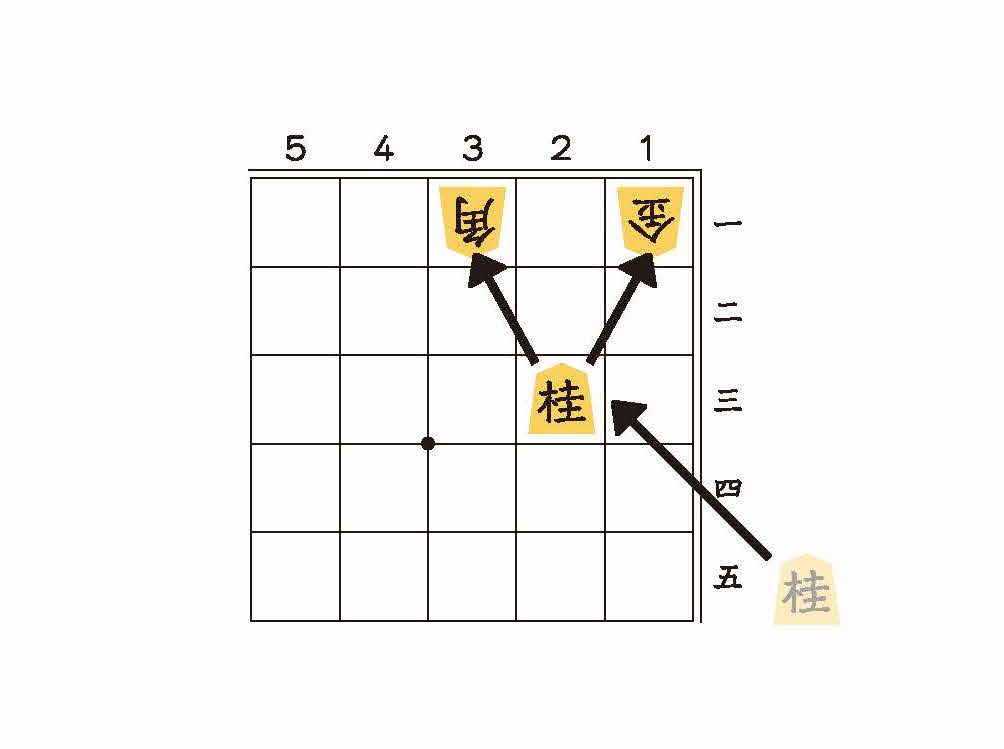
Picture #1: Attack Kaku (Bishop) and Kin (Gold) at the Same Time
Let’s see different types of Fork in the following pictures: Fork by Gin (Silver) in a picture #2, by Kaku (Bishop) in a picture #3, and by Hi (Rook) in a picture #4.
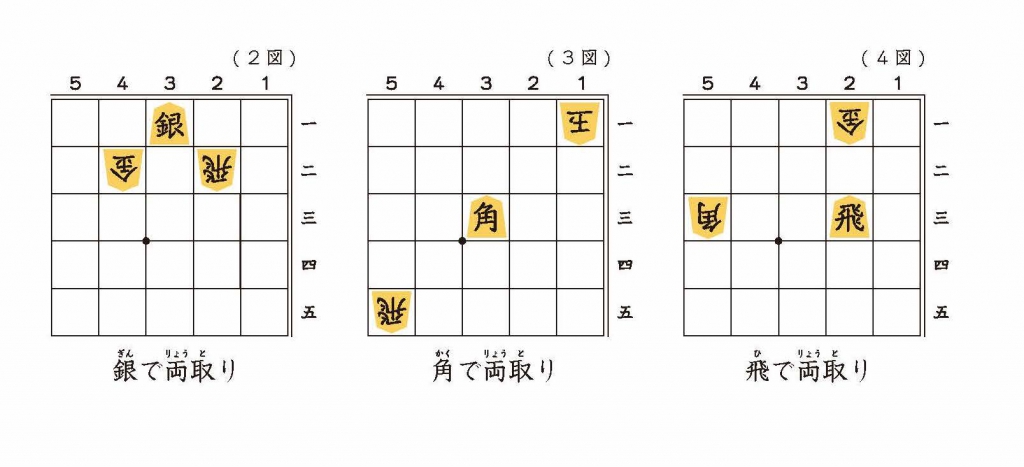
Picture #2, #3, and #4: Other Examples of Fork
Among Fork situations, a fork between Gyoku (King) and Hisha (Rook) is named Otebisha. To protect Gyoku (King) , you have to sacrifice your Hisha (Rook). It must be tough, being under Otebisha attack. You will surely get the upper hand if you can make Otebisha in a real game.
2. Aim at an Opponent’s Pieces
Dropping your hand piece, attack your opponent pieces. The point here is that you have to be careful not for your dropped piece to be captured, and then aim at the opponent pieces.
Here is a question. Look at the below picture on the left, and think which square, #1 or #2, you should drop your hand piece, Hisha (Rook), on?
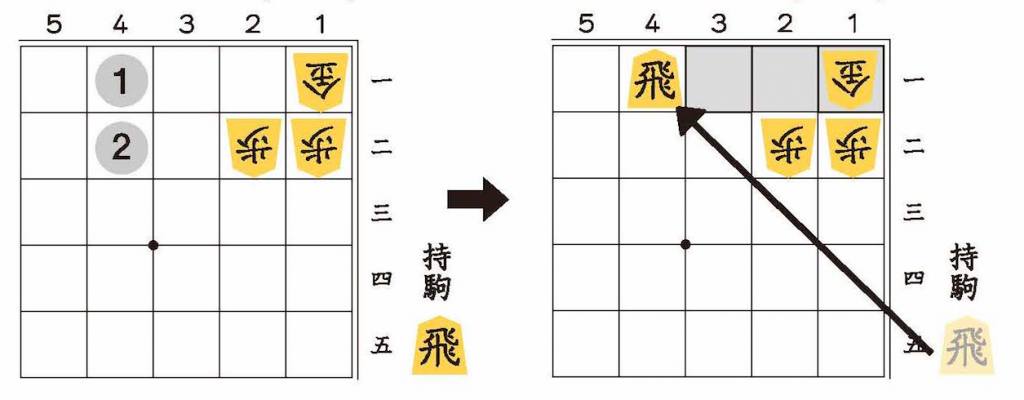
Aim at an opponent’s Kin (Gold).
The square marked with #1 is the answer, because Hisha (Rook) will capture Kin (Gold) from the square.
During an early period, you tend to forget using your hand pieces. The more effectively reuse your hand piece, the more you develop your Shogi skills.
3. Use Hand Pieces as Defense
Next, let’s think how to use your hand pieces to defend your side. The below situation shows your opponent is making Check with his/her Hisha (Rook). What will you do?
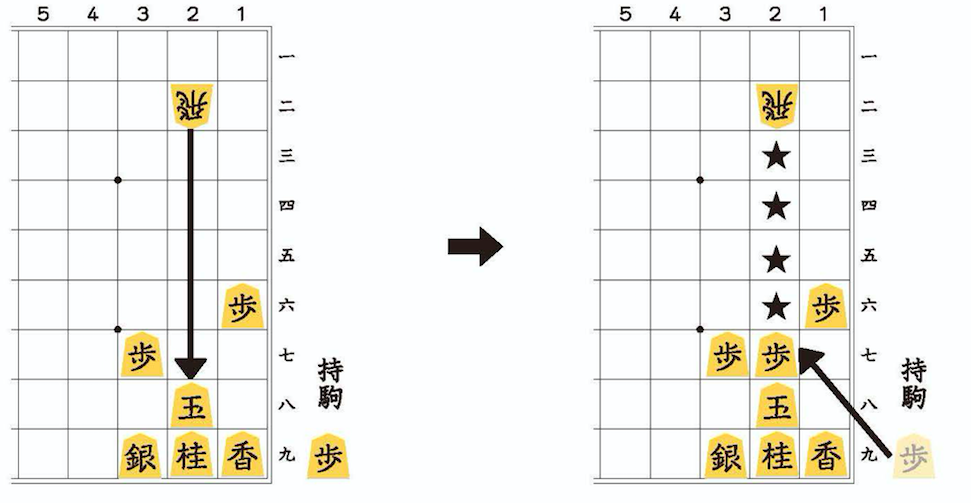
Use your hand piece as defense.
Drop Fu (Pawn) to protect your Gyoku (King).
Did you do that? You may also drop Fu (Pawn) on any square with a ★ mark, but each dropping will soon allow Hisha (Rook) to make Check again.
Dropping a piece between the attacking piece and the piece under the attack is called Aigoma. This is a technique used to protect your Gyoku (King) from Check or your pieces being attacked. By the way, if your dropped piece is taken back soon later, the dropping is called Muda-Ai. In the event of Muda-Ai, you will waste your piece. Be careful not to drop a piece to be Muda-Ai.
After Today’s Lesson
In this lesson, children learned how to use hand pieces. “More importantly,” Akiko-sensei said, “in order to use your hand piece effectively, put them neatly on a piece stand”. If your hand pieces are scattered on a piece stand, you, indeed, will find it difficult to realize what you or your opponent have as hand pieces. It’s like a messy refrigerator, isn’t it? After listening this important advice from Akiko-sensei, children did set a captured piece neatly. We learned an important thing besides techniques.
I noticed that my girls very seriously look at pieces on a board, but they don’t think about their hand pieces, nor their opponent’s hand pieces. They sometimes got surprised by their opponents’ unpredictable hand piece use. “Captured pieces seem to gain power to teleport!”, they said.
For Children Who Don’t Know the Effective Use of Hand Pieces and Settle for Keeping a Lot of Them
Shogi Lesson Book for Beginners Vol. 2 will give you good knowledge about how to use hand pieces effectively.
